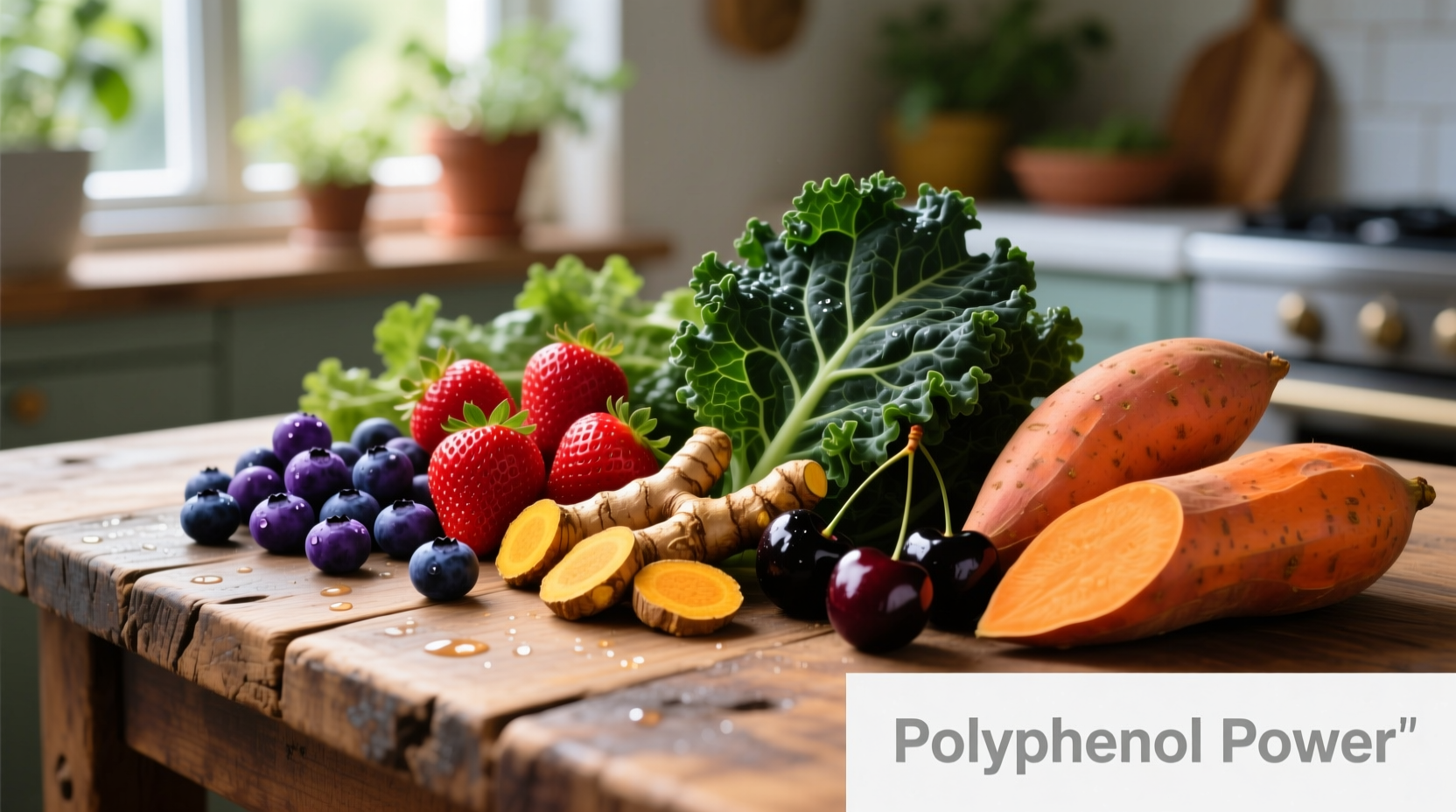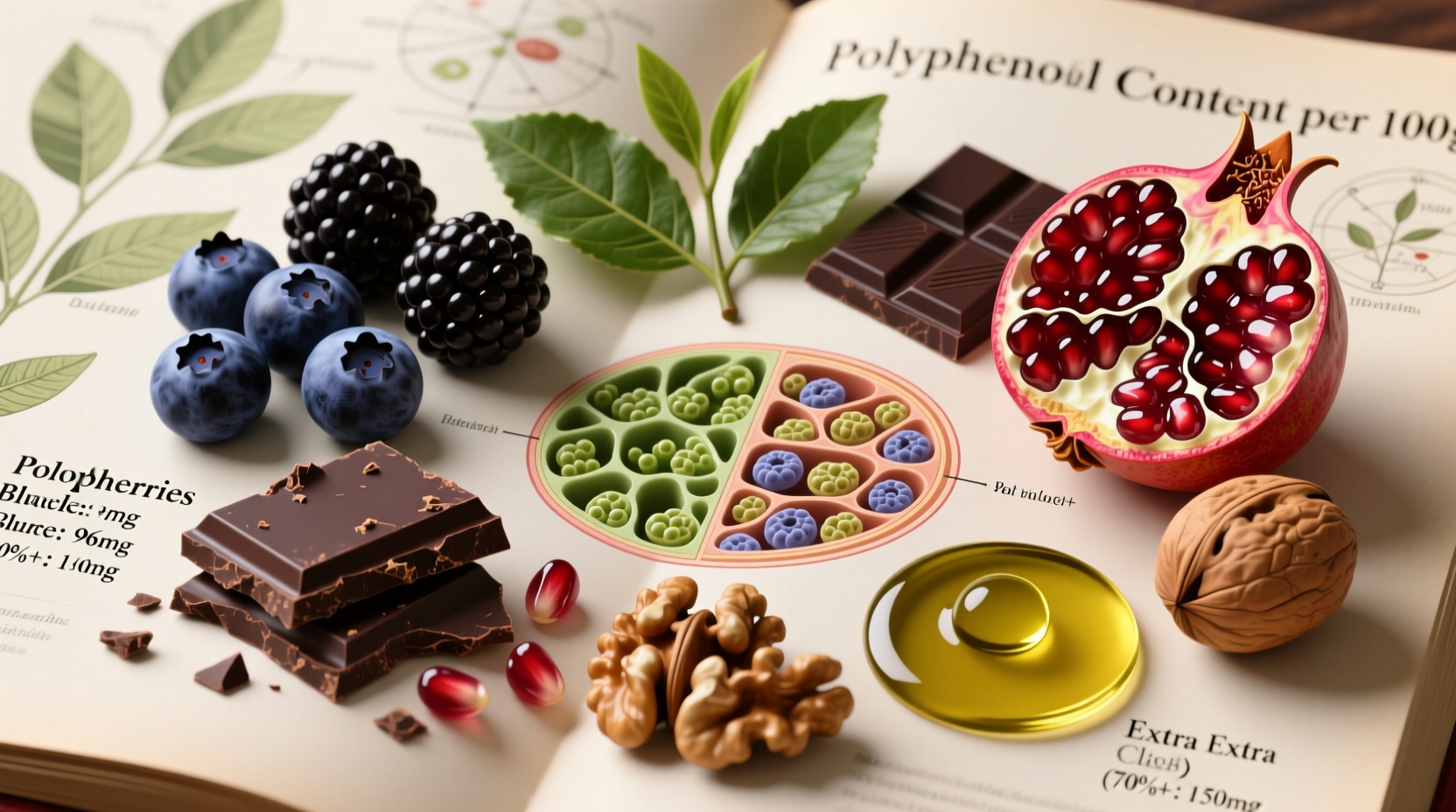Discover how incorporating these scientifically validated polyphenol powerhouses into your daily meals can boost your antioxidant intake and support long-term health. This evidence-based guide reveals exactly which foods deliver the highest concentrations of these beneficial compounds, backed by nutritional research from authoritative sources.
Why Polyphenols Matter for Your Health
Polyphenols represent one of nature's most potent antioxidant compounds, with over 8,000 different types identified in plant-based foods. These naturally occurring phytochemicals help combat oxidative stress, reduce inflammation, and may lower your risk of chronic diseases including heart disease and certain cancers. Unlike synthetic supplements, polyphenols from whole foods work synergistically with other nutrients to maximize health benefits.
According to the USDA's Phytochemical and Antioxidant Database, the average American consumes approximately 250-800 mg of polyphenols daily, though research suggests optimal intake may be significantly higher. The key isn't just consuming polyphenols, but selecting foods with the highest concentrations and preparing them in ways that preserve these delicate compounds.
Top Polyphenol-Rich Foods by Category
Based on comprehensive analysis from the Phenol-Explorer database (the world's largest scientific resource on polyphenol content in foods), here are the most potent dietary sources organized by food category:
| Food Source | Polyphenol Content (mg/100g) | Primary Polyphenol Types |
|---|---|---|
| Cloves | 15,000 | Eugenol, flavonoids |
| Dried Peppermint | 11,000 | Eriodictyol, luteolin |
| Star Anise | 5,400 | Anethole, quercetin |
| Cocoa Powder (unsweetened) | 2,000 | Flavanols, catechins |
| Mexican Oregano | 1,800 | Rosmarinic acid, thymol |
| Dark Chocolate (70-85% cocoa) | 1,600 | Epicatechin, procyanidins |
| Flaxseed | 1,400 | Lignans, secoisolariciresinol |
| Black Elderberries | 1,300 | Anthocyanins, flavonols |
Maximizing Your Daily Polyphenol Intake
Simply knowing which foods contain high polyphenol levels isn't enough—you need practical strategies to incorporate them effectively into your diet. Research from the American Journal of Clinical Nutrition shows that preparation methods significantly impact polyphenol retention and bioavailability.
Smart consumption techniques:
- Pair with healthy fats: Consuming polyphenol-rich foods like berries with nuts or avocado increases absorption of these fat-soluble compounds by up to 30% according to a 2022 study in Nutrients
- Avoid excessive heat: Boiling blueberries can reduce anthocyanin content by 40%, while gentle steaming preserves more antioxidants
- Choose whole forms: Whole fruits contain significantly more polyphenols than juices—apple with skin has 136 mg/100g versus 25 mg/100g in juice
- Time your consumption: Consuming green tea between meals rather than with food prevents interference with iron absorption

Scientific Evidence on Polyphenol Benefits
Over the past two decades, polyphenol research has evolved from basic identification to understanding specific health mechanisms. The European Food Safety Authority now recognizes certain polyphenol compounds for their scientifically validated health benefits.
Polyphenol Research Evolution
- 2000-2010: Identification and quantification of polyphenols in common foods
- 2010-2015: Establishment of databases like Phenol-Explorer cataloging over 500 foods
- 2015-2020: Clinical trials demonstrating cardiovascular and cognitive benefits
- 2020-Present: Personalized nutrition research on polyphenol metabolism variations
However, context matters—polyphenol benefits depend on individual factors including gut microbiome composition. A 2023 review in Advances in Nutrition noted that "approximately 30-40% of the population may experience reduced polyphenol metabolism due to genetic variations affecting enzyme activity." This explains why some people benefit more from certain polyphenol sources than others.
For optimal results, focus on variety rather than relying on single "superfoods." The USDA recommends consuming at least 3-5 different polyphenol-rich foods daily to maximize the diverse health benefits these compounds provide. This approach ensures you receive multiple types of polyphenols that work through different biological pathways.
Practical Daily Integration Strategies
Transform your eating habits with these realistic approaches to boost polyphenol intake without drastic dietary changes:
Breakfast boost: Add one tablespoon of ground flaxseed (1,400 mg polyphenols) and a handful of blueberries (330 mg) to your morning oatmeal. This simple addition provides over 500 mg of polyphenols to start your day.
Lunch enhancement: Create a salad with mixed greens, olives, red onions, and a dressing made with extra virgin olive oil and oregano. This combination delivers multiple polyphenol types that work synergistically.
Smart snacking: Choose a small square of dark chocolate (70%+ cocoa) with a handful of almonds instead of processed snacks. This provides both flavonoids and healthy fats for better absorption.
Beverage upgrade: Replace one daily sugary drink with green tea or hibiscus tea, both exceptionally rich in specific polyphenol compounds. Proper brewing (175°F water for 2-3 minutes) maximizes catechin extraction without bitterness.
Remember that processing significantly affects polyphenol content. For example, canned black beans contain 40% fewer polyphenols than freshly cooked dried beans. Whenever possible, choose minimally processed whole food sources for maximum benefit.
Frequently Asked Questions
How much polyphenol intake is recommended daily?
While no official daily value exists, research suggests consuming 1,000-1,500 mg of polyphenols daily provides significant health benefits. Most people currently consume only 250-800 mg daily, so increasing intake through whole foods is beneficial.
Are polyphenol supplements as effective as food sources?
Whole food sources generally provide superior benefits compared to supplements. The complex matrix of nutrients in foods enhances polyphenol absorption and effectiveness. Supplements often contain isolated compounds that don't replicate the synergistic effects found in whole foods.
Does cooking destroy polyphenols in foods?
Cooking methods significantly impact polyphenol retention. Boiling causes the greatest loss (up to 50% for some compounds), while steaming, baking, and microwaving preserve more. Some foods like tomatoes actually increase beneficial polyphenol availability through gentle cooking.











 浙公网安备
33010002000092号
浙公网安备
33010002000092号 浙B2-20120091-4
浙B2-20120091-4